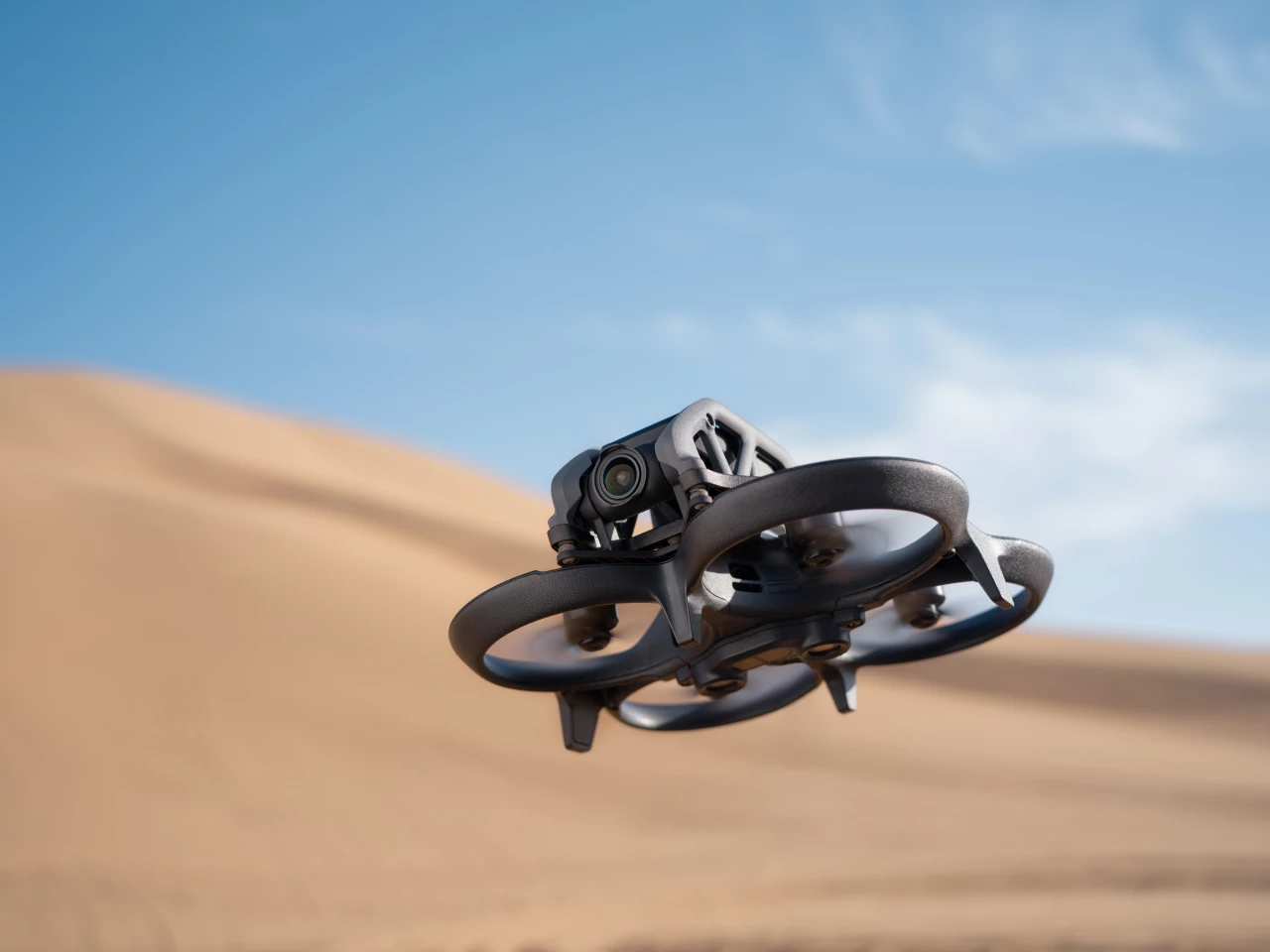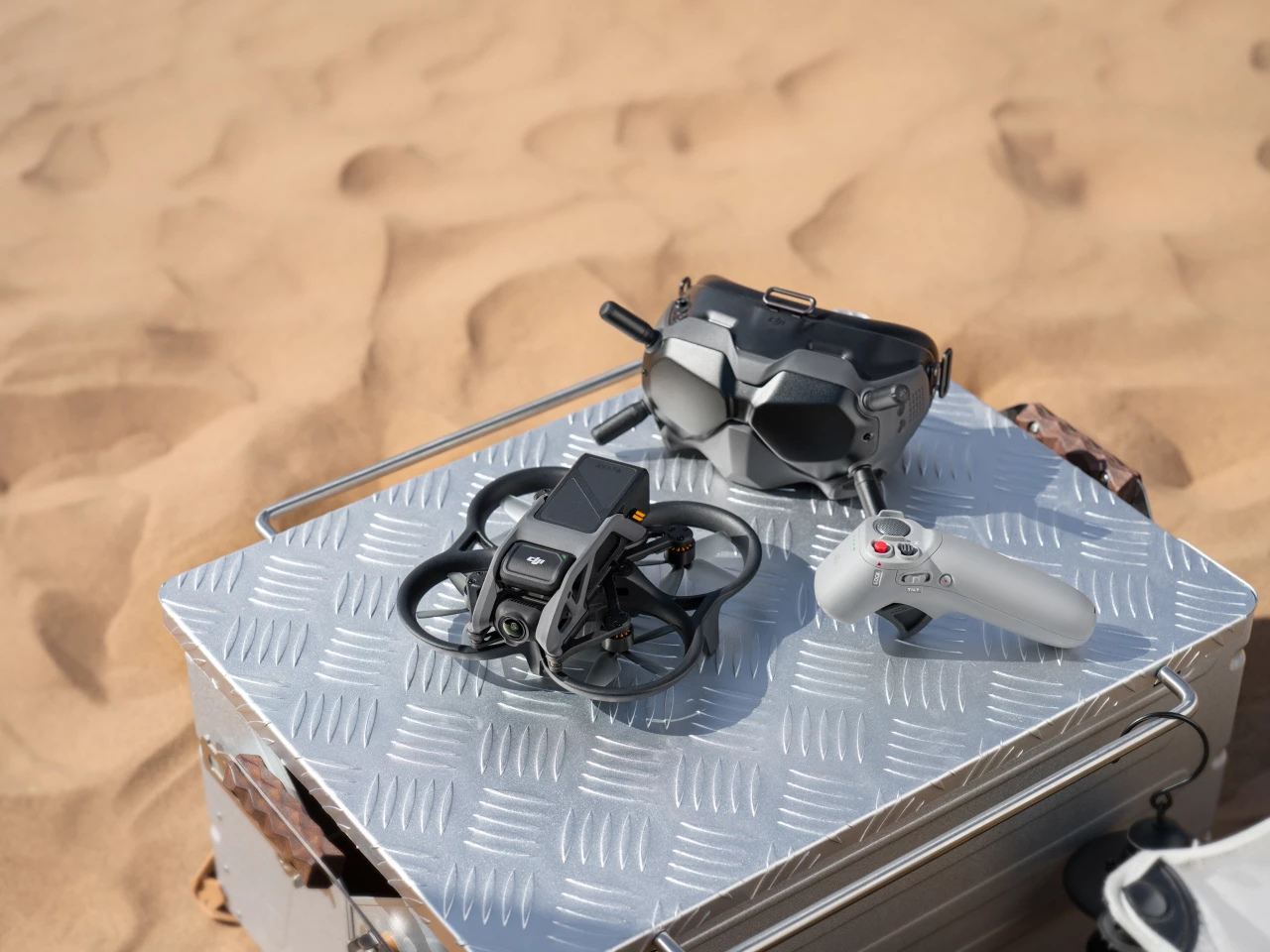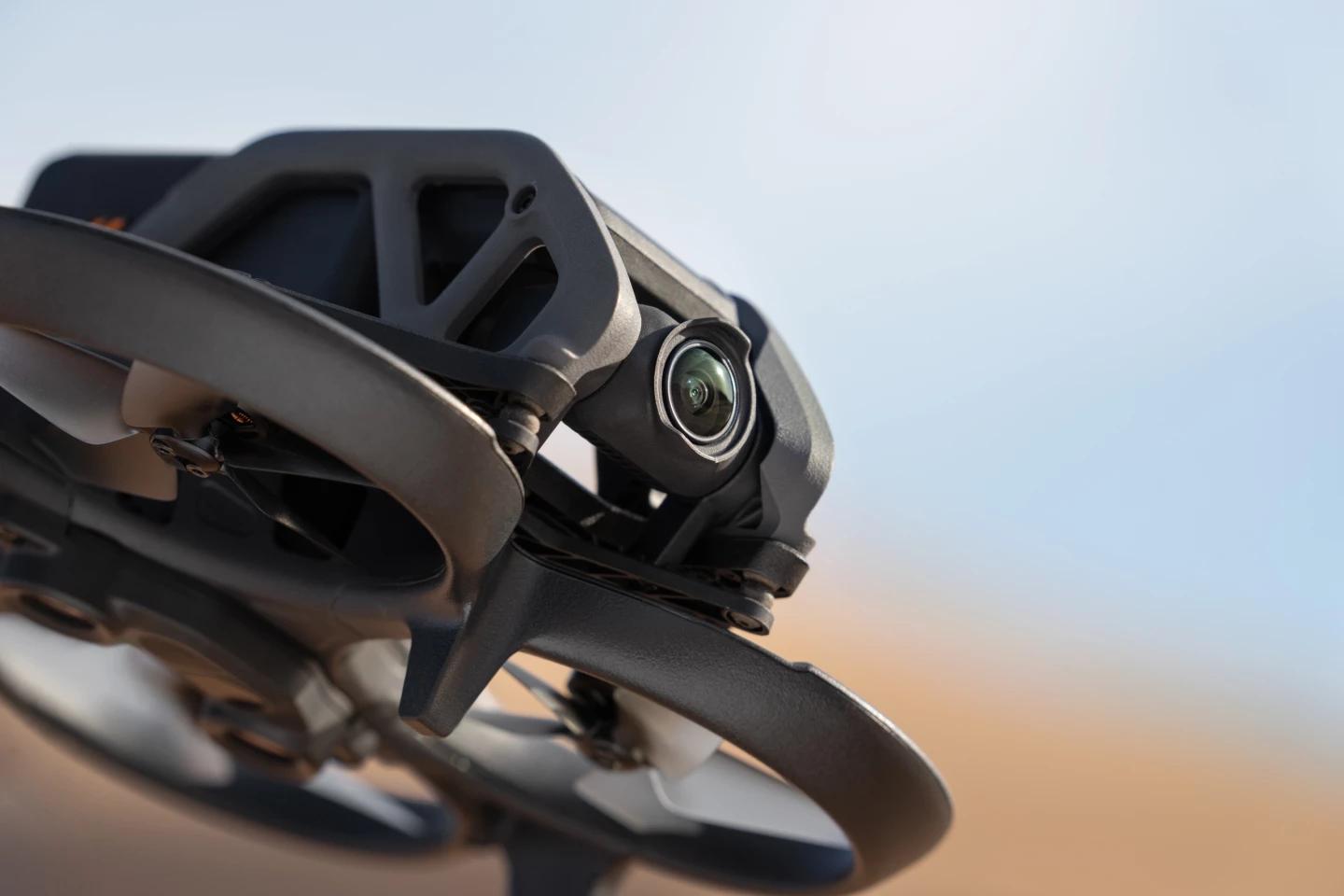DJI has launched its own cinewhoop-style drone, a stabilized flyer designed to capture crisp video footage indoors or out. The Avata boasts a 4K camera, shielded props, and ease of use with the new headset and controller.
The Avata is bigger and heavier than your average cinewhoop at 180 x 180 x 80 mm (7 x 7 x 3 in) and 410 g (14.4 oz). It's said to rock a body designed for speed and agility, comes with user-friendly prop guards and is "breathtaking to fly for even a novice pilot."
DJI has cooked in three flight modes to suit different skill levels, with one that makes use of onboard systems to automate aspects of operation, a full manual flying mode that allows pilots to zip up to a top speed of 27 m/s (88.5 ft/s), and a Sport mode that sits somewhere inbetween "to give pilots more room to explore their skills as they get accustomed to the drone." A 2,420-mAh Li-ion battery is reported to offer a per-charge flight time of up to 18 minutes.

The onboard safety suite includes IR sensors and downward-facing dual cameras for precision flying and hovering in locations where GPS might struggle, an ADS-B receiver to warn of any nearby aircraft, and DJI's geofencing system to automatically prevent it flying in restricted locations.
A return-to-base feature will see the drone automatically fly back to its starting point if the transmission signal is lost or the battery is low, or if the pilot commands it to do so. And it features a new turtle mode that flips it over should it land upside down.
Users new or experienced are treated to FPV (first-person-view) flying when used with the new Goggles 2 and handheld Motion Controller. The insect-like headset wirelessly connects to the drone using DJI O3+ transmission technology with auto frequency switching for low-lag streaming of video from the drone's main camera at a range of up to 10 km (6+ miles) away.

Its micro-OLED screen offers Full HD video feeds at 100 frames per second with H.265 decoding. Adjustable diopters are included for ease of use by folks who wear glasses, and there's a touch panel to the side for one-handed settings adjustment. The Goggles 2 can also stream content from a mobile phone or computer when not being used with the drone.
The new controller, meanwhile, allows users to fly using natural hand movements and is " so intuitive that even complete beginners can get started quickly and learn to fly in continuous fluid motions, even when swooping close to the ground, whizzing past obstacles, and gliding through tight enclosures into open spaces."
If you don't want to buy into the new headset/controller, the Avata can also be controlled with the existing FPV Remote Controller 2 and FPV Goggles V2.
The Avata's 48-MP gimbal camera sports a 1/1.7-in CMOS sensor with a f/2.8 aperture and ultra-wide-angle lens that offers a field of view spanning 155 degrees.

It employs DJI RockSteady and DJI HorizonSteady stabilization technologies to keep footage sharp "even during high-pressure aerial maneuvers" – though electronic image stabilization can be disabled if preferred – and can capture 4K video at 60 frames per second, or 2.7K at up to 120 fps for slow-mo flyby action.
There's support for a broad color gamut thanks to the inclusion of a D-Cinelike mode, ISO100 to 25,600 light sensitivity and 1/8,000 to 1/50 shutter speeds for photo or video modes. And captured content is saved to 20 GB of internal storage, and there's a microSD slot too.
The DJI Avata on its own is priced at US$629, or bundled with the Goggles 2 and Motion Controller for $1,388. The video below has more.
Product page: DJI Avata











